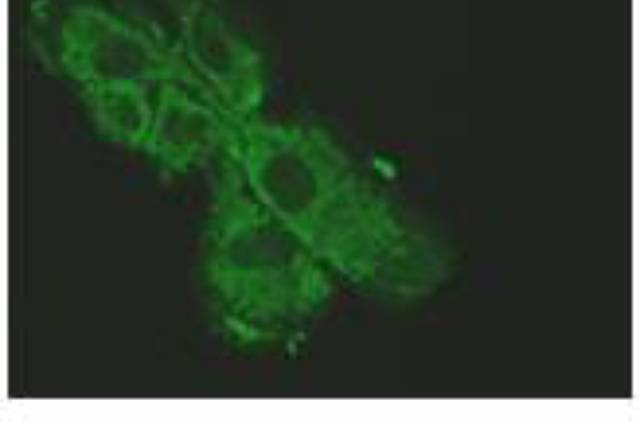ISOENZYME-SPECIFIC ANTIBODIES AGAINST HUMAN GLUTAMINASE TYPES K AND L
Description
Glutaminase is a mitochondrial enzyme that catalyzes the conversion of glutamine to glutamate and ammonium. It is an essential enzyme in the energy and nitrogen metabolism of many cell types, especially in rapidly growing cells such as tumor cells. A correlation between phosphate-activated glutaminase (PAG) expression and malignancy has been found in human tumors and experimental cancers. Furthermore, PAG plays a fundamental role in pH homeostasis in the kidney, in protein metabolism in the liver, and in the synthesis of the neurotransmitter glutamate in the brain. In humans, there are two different genes that encode two insoenzymes, called K and L. A general problem in the detection of PAG isoenzymes is the lack of high-affinity antibodies that are isoform-specific, that is, they do not cross-react. among them.
The present invention solves the aforementioned problem, by providing a method to recognize human and other mammalian K and L PAG isoenzymes, with great affinity and specificity, allowing tumor cell typing and characterizing which isoenzyme is expressed at the regional, cellular level. and subcellular in the mammalian brain. This method comprises the following steps:
(a) contacting a sample of tissue or extract from mammals (human, monkey, rat, mouse, etc ...) or human cancer cells grown in vitro, with a series of polyclonal antibodies, each being they are able to recognize a specific epitope of one of the two glutaminase isoenzymes, K or L, during the time and under sufficient conditions for the formation of the antigen-antibody complex and the detection of the formation of the complexes.
(b) the qualitative and quantitative determination of the expression pattern and the regional, cellular and subcellular localization of glutaminase isoenzymes K and L in said sample;
(c) comparison of the expression pattern of samples from cancer patients with a set of reference standards from healthy tissues and cancer cell lines, for which the glutaminase expression pattern is known: and
(d) the prediction of the possible clinical evolution of the patient based on the expression levels of both isoenzymes.
Advantages
The main advantage of this invention is to provide a method to recognize human and other mammalian PAG isoenzymes K and L, with high affinity and specificity, since there are no commercially available mammalian PAG antibodies, and the antibodies described in the literature may give cross-immunoreactivity with other isoforms of PAG.
Uses and Applications
The antibodies object of the present invention are useful to discover what type of glutaminase isoenzyme (K-PAG or L-PAG) is expressed in a tissue or cell type, allowing the typing of tumor cells; to characterize which isozyme is expressed at the regional, cellular and subcellular levels in the mammalian brain, which allows its use as marker reagents for specific cell populations; or to compare the isoenzyme pattern in cancer patients with reference standards and determine qualitative or quantitative changes in glutaminase expression, with potential impact on the prognosis and clinical evolution of the patient.
Keywords
Sectors
Areas
Patent Number
ES2230954
Applicants
UNIVERSIDAD DE MÁLAGA
Inventors
JOSÉ ÁNGEL CAMPOS SANDOVAL, JUAN CARLOS ALEDO RAMOS, LUCÍA OLALLA MARTÍN, ANTONIA GUTIERREZ PEREZ, FRANCISCO JOSE ALONSO CARRION, JUAN ANTONIO SEGURA CHECA, FRANCISCO JAVIER MARQUEZ GOMEZ
Filing Date
01/08/2002
Protection Level: National (Spain)
Processing Status: Spanish patent








